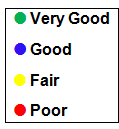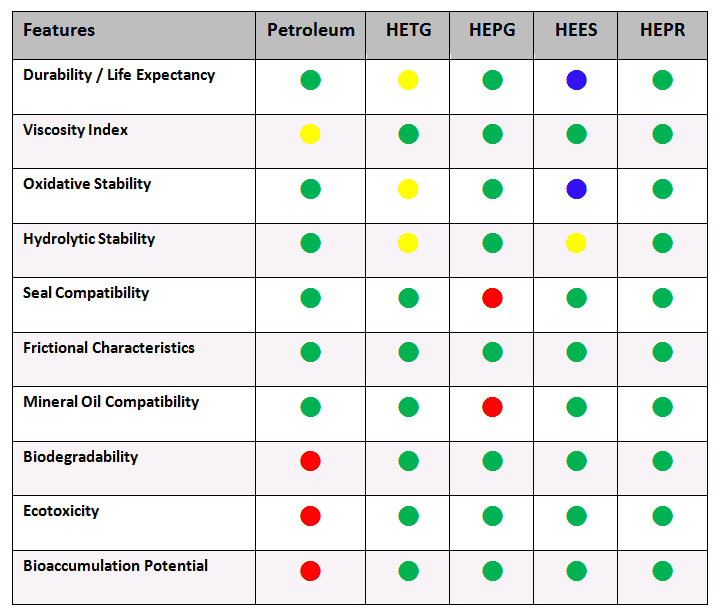Not All EALs are Created Equal
What is an EAL?
Environmentally Acceptable Lubricants (EALs) are defined by the EPA as offering these three characteristics. First, they must be “biodegradable” - biodegrading into carbon dioxide and water by ≥ 60% or more within 28 days (according to OECD 301B or ASTM D7373 methods). Next, they must be “minimally toxic,” causing only a light impact on the aquatic environment (LC50> 100mg/L for lubricants and LC50>1000mg/L). Lastly, they are “not bioaccumulative,” and must have a low propensity to bioaccumulate in organisms.
Additionally, the Clean Water Act of 1972 mentions discharges of oils should not exhibit any visible ‘sheen’ on the water’s surface otherwise it is considered a pollutant (according to CFR 40 Part 435 A).
Where to Use EALs
EALs should be used in place of traditional petroleum lubricants in all marine applications where there is any oil-to-water interface. These applications include stern tubes, controllable pitch propellers, stabilizers, rudders, thrusters, Azipods, towing, notch interfaces, wire rope and mechanical equipment subject to immersion such as dredges and grabs.
EAL Confusion in the Marketplace
There’s conflicting information in the marketing place about EALs. A lack of agreed upon definition is one contributing factor, as is lack of awareness of the four different types of EALs that are available. Inconsistent performance claims from manufacturers have also led to the confusion. Let’s clarify a few myths right from the start:
EALs Do
*Perform equal to or better than petroleum lubricants
*Mitigate the discharge’s environmental impact
*Improve productivity, which leads to profitability
EALs Don’t
*Eliminate spill occurrence
*Eliminate the need to report a spill or discharge
*Eliminate the need to clean up a spill or discharge
The Benefits of EALs
Another common misconception is that EALs, while being good for the environment, are not the best choice for operators. However, EALs also deliver a wide range of benefits, making them a strong choice even for those who not are not currently required to use them.
Sustainability Benefits
While EALs are generally more expensive than conventional oil counterparts in upfront costs, an increasing number of companies have chosen to convert to EALs based on their broad range of environmental and performance benefits. In various marine applications and equipment, there are periodic fluid leaks and discharges. It is critical to minimize any environmental damage or detrimental contact to humans, aquatic life or animals that can be caused by these unavoidable leaks and discharges. Using biodegradable EALs allows companies to be confident that their leaks and discharges will not cause harm to water, land or living beings while potentially reducing remediation costs or fines.
Performance Benefits
In addition to risk mitigation, sustainability and compliance benefits, EALs, which are high viscosity (high VI) lubricants, can offer several performance advantages including:
- Durability and extended wear protection
- Extended fluid life
- Broad temperature range performance
- Excellent thermal and hydrolytic stability
- Excellent seal compatibility
- Excellent water separation characteristics
- Good corrosion protection and oxidation stability
All of these factors combine to reduce total cost of ownership, which make select EALs a more attractive option for many organizations.
Choosing the Right EAL for Your Needs
The Four EAL Types
The EPA recognizes four types of EALs:
- Vegetable Oils (HETG)
- Synthetic Esters (HEES)
- Polyalkylene Glycols (HEPG)
- Polyalphaolefins (PAOs) and related hydrocarbon products (HEPR)

Choosing the most suitable EAL depends on the end-user application. The chart below provides a quick side-by-side glance comparing features for all four EAL types and standard petroleum based lubricants. Reference corresponding color key.

How do EAL manufacturers demonstrate VGP compliance?
EAL compliance with VGP must be demonstrated through independent laboratory testing of the biodegradability, toxicity and bioaccumulation of fluid – often referred to as self-certification.
Clean Sailing Win-Wins
VGP regulations were not designed to interfere with your operations, but to help protect the marine environment on which your operations depend. Environmentally Acceptable Lubricants are not only mandated by the EPA, they perform equivalent to or better than petroleum lubricants while offering a safer alternative for employees to handle and have less impact on the environment.
While many factors should be considered when evaluating which EAL best fits your needs - including operating temperature and pressure, seals/elastomers, water ingress, fluid life, preventative maintenance cycles and spill/discharge potential - the U.S Environmental Protection Agency and many fluid manufacturers offer resources to help with conversion. By availing yourself of these resources, following expert advice and equipping crew members with the right information, operators can focus on what’s most important: running a profitable business with compliant vessels that help protect and sustain our waterways.


